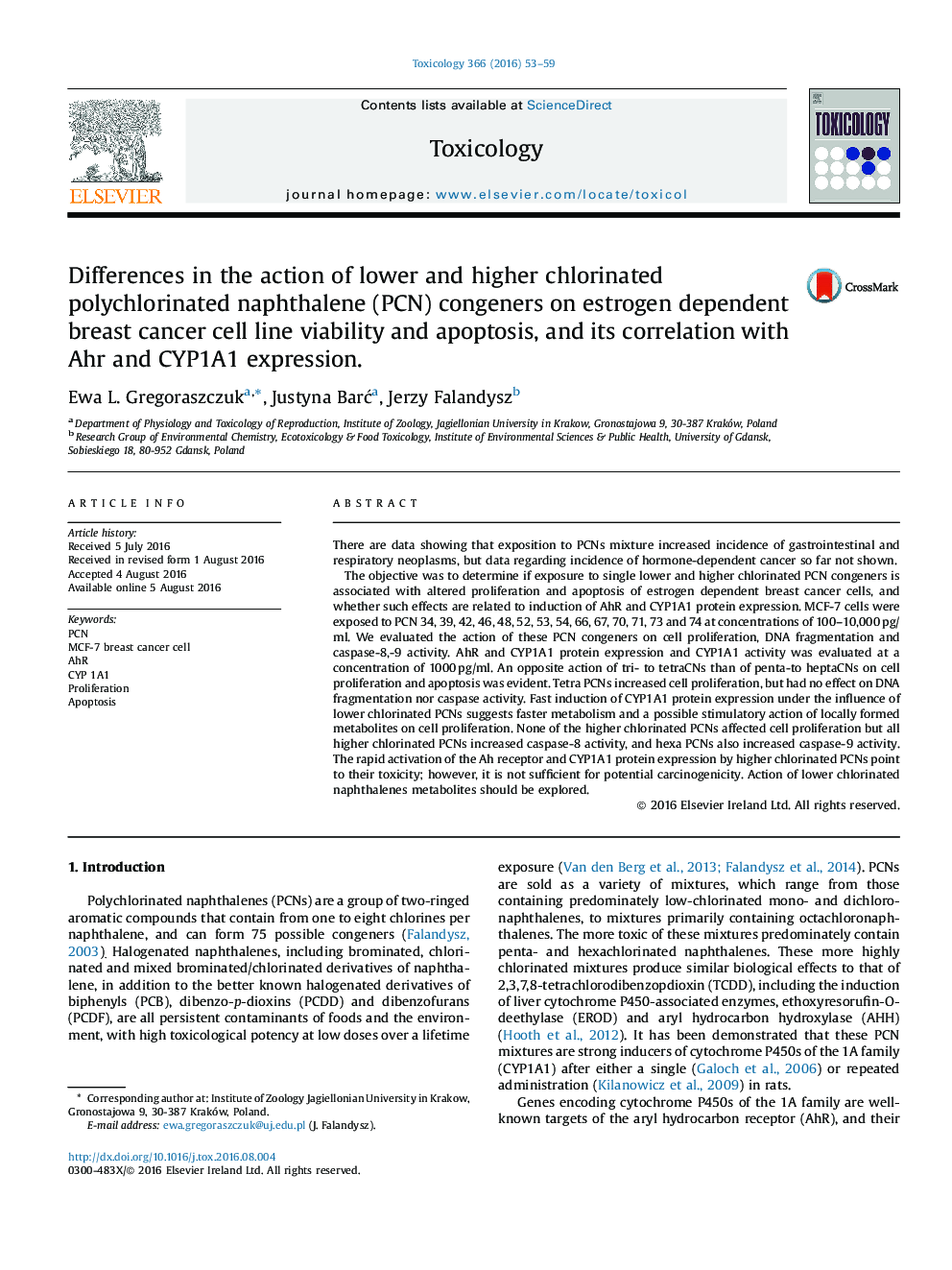| Article ID | Journal | Published Year | Pages | File Type |
|---|---|---|---|---|
| 2595399 | Toxicology | 2016 | 7 Pages |
There are data showing that exposition to PCNs mixture increased incidence of gastrointestinal and respiratory neoplasms, but data regarding incidence of hormone-dependent cancer so far not shown.The objective was to determine if exposure to single lower and higher chlorinated PCN congeners is associated with altered proliferation and apoptosis of estrogen dependent breast cancer cells, and whether such effects are related to induction of AhR and CYP1A1 protein expression. MCF-7 cells were exposed to PCN 34, 39, 42, 46, 48, 52, 53, 54, 66, 67, 70, 71, 73 and 74 at concentrations of 100–10,000 pg/ml. We evaluated the action of these PCN congeners on cell proliferation, DNA fragmentation and caspase-8,-9 activity. AhR and CYP1A1 protein expression and CYP1A1 activity was evaluated at a concentration of 1000 pg/ml. An opposite action of tri- to tetraCNs than of penta-to heptaCNs on cell proliferation and apoptosis was evident. Tetra PCNs increased cell proliferation, but had no effect on DNA fragmentation nor caspase activity. Fast induction of CYP1A1 protein expression under the influence of lower chlorinated PCNs suggests faster metabolism and a possible stimulatory action of locally formed metabolites on cell proliferation. None of the higher chlorinated PCNs affected cell proliferation but all higher chlorinated PCNs increased caspase-8 activity, and hexa PCNs also increased caspase-9 activity. The rapid activation of the Ah receptor and CYP1A1 protein expression by higher chlorinated PCNs point to their toxicity; however, it is not sufficient for potential carcinogenicity. Action of lower chlorinated naphthalenes metabolites should be explored.
